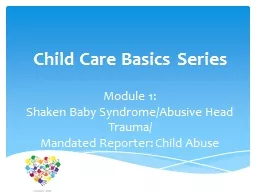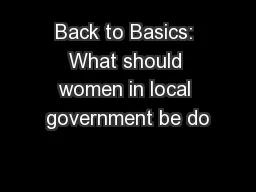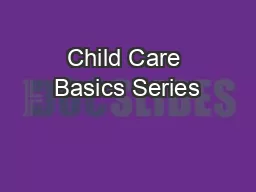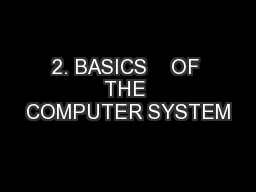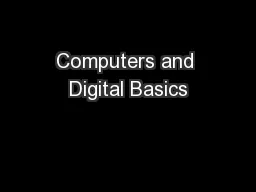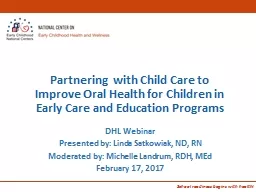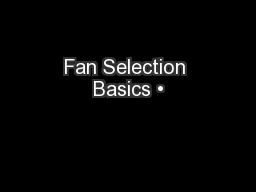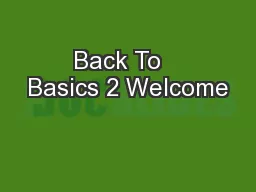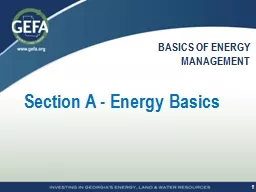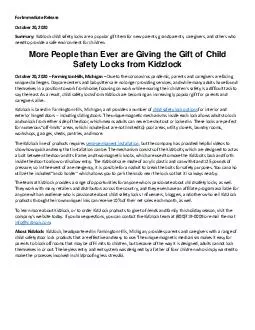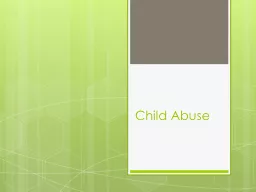PPT-Child Care Basics Series
Author : karlyn-bohler | Published Date : 2017-09-22
Module 1 Shaken Baby SyndromeAbusive Head Trauma Mandated Reporter Child Abuse Shaken BabyAbusive Head Trauma What Is Abusive Head Trauma Abusive head trauma
Presentation Embed Code
Download Presentation
Download Presentation The PPT/PDF document "Child Care Basics Series" is the property of its rightful owner. Permission is granted to download and print the materials on this website for personal, non-commercial use only, and to display it on your personal computer provided you do not modify the materials and that you retain all copyright notices contained in the materials. By downloading content from our website, you accept the terms of this agreement.
Child Care Basics Series: Transcript
Module 1 Shaken Baby SyndromeAbusive Head Trauma Mandated Reporter Child Abuse Shaken BabyAbusive Head Trauma What Is Abusive Head Trauma Abusive head trauma also called shaken baby syndrome or SBS goes by many other names including inflicted traumatic brain injury and shaken impact syndrome All of these names mean the same thing an injury to a childs brain as a result of child . Disclaimer. : . While drawing on . CoGTA’s. Back to Basics information, this is NOT an official . CoGTA. presentation and does not purport to portray the only actions required of women in LG. . International Women’s Day. Disclaimer. : . While drawing on . CoGTA’s. Back to Basics information, this is NOT an official . CoGTA. presentation and does not purport to portray the only actions required of women in LG. . International Women’s Day. Module 4:. Injury Prevention in the Child Care Setting . Facility . S. afety and Hazardous . M. aterials Handling. Understand the dynamics of injury prevention in outdoor play spaces.. Explain the basic components of a safe child care facility environment designed to decrease injury.. Assoc.Prof. .. Dr. . Ahmet . Zafer . Şenalp. e-mail: . azsenalp@gmail.com. Mechanical Engineering Department. Gebze. Technical University. ME 521. Computer. . Aided. . Design. 2. BASICS OF THE COMPUTER SYSTEM. Chapter 1. Chapter 1: Computers and Digital Basics. 2. Chapter Contents. Section A: All Things Digital. Section B: Digital Devices. Section C: Digital Data Representation. Section D: Digital Processing. DHL Webinar. Presented by: Linda Satkowiak, ND, RN. Moderated by: Michelle Landrum, RDH, MEd. February 17, 2017. General Reminders. This webinar will be recorded and archived on the ASTDD website. Questions will be addressed after the speakers are finished. Please click on the icon at the top of your screen that looks like a person with their hand in the air. The moderator will recognize and “un-mute” you so you can ask your question.. Centrifugal Fan Selection. • Fan Laws. . Specific Speed. • Multiple Fan Arrangements. . Fan Features and Considerations. Fan Selection Basics. 4. Fan Selection Basics. Centrifugal Fan Selection. Vivian O’Neill. ,. CH, NHP, R. BIE. Diamond Manager. Our Quality. . . . . . WE EARN OUR CUSTOMERS’ TRUST FOUR STEPS AT A TIME.. Step One: Raw Material Sourcing.. We travel the world to inspect our suppliers' facilities and processes to ensure the highest quality natural ingredients are harvested and handled to protect key essential nutrients. Then, we verify each ingredient’s true beneficial potential.. Chapter Contents. Section A: All Things Digital. Section B: Digital Devices. Section C: Digital Data Representation. Section D: Digital Processing. Section E: Password Security. Chapter 1: Computers and Digital Basics. Section A - Energy Basics. These resource materials were developed by the Kentucky Pollution Prevention Center at the University of Louisville for KEEPS – Kentucky Energy Efficiency Programs for Schools – with support from the U.S. Department of . February 26, 2019 CS410 – Software Engineering Lecture #3: C++ Basics I 1 Literal Constants A literal string constant is composed of zero or more characters enclosed in double quotation marks. Kidzlock child safety locks are a popular gift item for new parents, grandparents, caregivers, and others who need to provide a safe environment for children. Visit: https://www.kidzlock.com/ Child abuse happens in all cultural, ethnic, and income groups. . Child . abuse can be . physical. , emotional/verbal, sexual or through neglect. . Abuse . may cause serious injury to . the . child and may even result in death. . Experience the best eye care center in Pune. The best clinics for your eye health, include the prestigious Dr. Sonalika Eye Clinic. At Hadapsar, Amanora, Magarpatta, Mundhwa, Kharadi Rd, Viman Nagar, Wagholi, and Wadgaon Sheri
Download Document
Here is the link to download the presentation.
"Child Care Basics Series"The content belongs to its owner. You may download and print it for personal use, without modification, and keep all copyright notices. By downloading, you agree to these terms.
Related Documents

